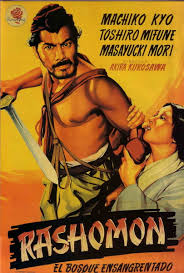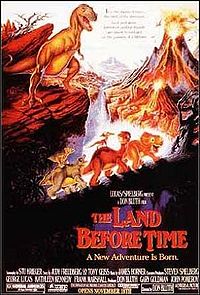Fear is something that all humans have felt and experienced, especially when the object of our fear is mysterious or anonymous to us. According to horror writer, H.P. Lovecraft, “the oldest and strongest emotion of mankind is fear, and the oldest and strongest kind of fear is fear of the unknown.” Expanding further on the concept of fear, Jiddu Krishnamurti (a spiritual philosopher) states that, “fear begins and ends with the desire to be secure…To find security and be secure is the everlasting cry. It is this insistent demand that breeds fear.” As one can see, fear is a very powerful emotion and it’s not surprising that film directors have tapped into this emotion to scare us for entertainment purposes or to point out something (usually, negative) about ourselves as human beings. Henri-Georges Clouzot is one such director that has utilized the emotion of fear to portray the negative side of human beings.
Perhaps, Clouzot’s best film to illustrate this point is Le Corbeau (The Raven), which depicts a small French town where all the residents receive “poison-pen” letters from an enigmatic figure called “The Raven” and the fear and paranoia that follows from them. The town is thrown into chaos and people begin to accuse one another of being “The Raven” and writing the letters. The fear and paranoia only increases when a young patient after receiving one of these letters, kills himself. The townspeople immediately assume that Marie Corbin (a nurse with a strict attitude) is “The Raven” (though she is not) because she reportedly did not like the patient and because she disapproved of Dr. Germain who is constantly attacked by “The Raven” in the letters for having an affair and giving abortions. At one point in the film, the town politicians desperate to do something about “The Raven” decide to get rid of Dr. Germain by setting him up, in the hope that “The Raven” would stop writing the letters; the plot is exposed and foiled.
The two incidents in the film illustrate how far the letters have driven everyone in the town to fear and paranoia. How Clouzot illicit these reactions from the citizens of the town is interesting and effective. For instance, most people would assume that a funeral procession would be safe from one of “The Raven’s” letters, but no Clouzot has a letter fall out of a wreath as the mourners follow the casket of the decease (the young man who killed himself). Even more suspenseful than the funeral procession, Clouzot saves the biggest place that we would assume that “The Raven” would never strike would be a Sunday morning Catholic mass. Yet, Clouzot being the director he is, has the letter dropped from the gallery during the sermon. Once again, this is effective what Clouzot did, because it shows the townspeople and us, the audience that nowhere is safe from “The Raven’s” claw. Believe you and me, the scene with the letter coming down from the gallery and seeing how the people react, sends chills down my spine. It’s that good of a scene.
Another thing that Clouzot does well with portraying fear and our reactions to it is the use of false clues and the twist ending. As stated earlier, Marie Corbin was an initial suspect of being “The Raven”, but thanks to Clouzot’s suspenseful scene where the letter falls from the gallery, Marie is found to be innocent because earlier in the film, she was in jail. That powerful scene helps illustrate the notion that “The Raven” could be anyone in the town and not the person we assume looks like a guilty party. In fact, Clouzot shows us two other potential suspects, Laura (Dr. Vorzet’s young wife) and Denise (a flirtatious woman who has fling with Dr. Germain). Both are not “The Raven,” yet the evidence that Clouzot provides us before the actual identity of “The Raven” is revealed made me think one of them was guilty. After all, Denise was seen in the film dusting a stuffed raven and said raven ended up near Dr. Germain’s front door. Both Denise and Laura were caught red-handed writing letters similar to “The Raven”, yet the real “Raven” was Dr. Vorzet (Laura’s husband) who discovered that his wife wanted a relationship with Dr. Germain and in act of revenge, came up with this scheme as way to expose other people’s skeletons in the closet.
The ending of the film was shocking and satisfying to me because the mother of the young man who committed suicide got her revenge when she killed Dr. Vorzet. Overall, Clouzot did a wonderful job with using fear and paranoia. Using unexpected places that the townspeople and audience would not expect to see a letter appear, shows us how Clouzot masterfully manipulates his audience into feeling fearful and paranoid because the audience like the townspeople are wondering when will the letters stop. In the end, Le Corbeau is a great thriller that keeps you wondering who the culprit is until the very end.
Perhaps, Clouzot’s best film to illustrate this point is Le Corbeau (The Raven), which depicts a small French town where all the residents receive “poison-pen” letters from an enigmatic figure called “The Raven” and the fear and paranoia that follows from them. The town is thrown into chaos and people begin to accuse one another of being “The Raven” and writing the letters. The fear and paranoia only increases when a young patient after receiving one of these letters, kills himself. The townspeople immediately assume that Marie Corbin (a nurse with a strict attitude) is “The Raven” (though she is not) because she reportedly did not like the patient and because she disapproved of Dr. Germain who is constantly attacked by “The Raven” in the letters for having an affair and giving abortions. At one point in the film, the town politicians desperate to do something about “The Raven” decide to get rid of Dr. Germain by setting him up, in the hope that “The Raven” would stop writing the letters; the plot is exposed and foiled.
The two incidents in the film illustrate how far the letters have driven everyone in the town to fear and paranoia. How Clouzot illicit these reactions from the citizens of the town is interesting and effective. For instance, most people would assume that a funeral procession would be safe from one of “The Raven’s” letters, but no Clouzot has a letter fall out of a wreath as the mourners follow the casket of the decease (the young man who killed himself). Even more suspenseful than the funeral procession, Clouzot saves the biggest place that we would assume that “The Raven” would never strike would be a Sunday morning Catholic mass. Yet, Clouzot being the director he is, has the letter dropped from the gallery during the sermon. Once again, this is effective what Clouzot did, because it shows the townspeople and us, the audience that nowhere is safe from “The Raven’s” claw. Believe you and me, the scene with the letter coming down from the gallery and seeing how the people react, sends chills down my spine. It’s that good of a scene.
Another thing that Clouzot does well with portraying fear and our reactions to it is the use of false clues and the twist ending. As stated earlier, Marie Corbin was an initial suspect of being “The Raven”, but thanks to Clouzot’s suspenseful scene where the letter falls from the gallery, Marie is found to be innocent because earlier in the film, she was in jail. That powerful scene helps illustrate the notion that “The Raven” could be anyone in the town and not the person we assume looks like a guilty party. In fact, Clouzot shows us two other potential suspects, Laura (Dr. Vorzet’s young wife) and Denise (a flirtatious woman who has fling with Dr. Germain). Both are not “The Raven,” yet the evidence that Clouzot provides us before the actual identity of “The Raven” is revealed made me think one of them was guilty. After all, Denise was seen in the film dusting a stuffed raven and said raven ended up near Dr. Germain’s front door. Both Denise and Laura were caught red-handed writing letters similar to “The Raven”, yet the real “Raven” was Dr. Vorzet (Laura’s husband) who discovered that his wife wanted a relationship with Dr. Germain and in act of revenge, came up with this scheme as way to expose other people’s skeletons in the closet.
The ending of the film was shocking and satisfying to me because the mother of the young man who committed suicide got her revenge when she killed Dr. Vorzet. Overall, Clouzot did a wonderful job with using fear and paranoia. Using unexpected places that the townspeople and audience would not expect to see a letter appear, shows us how Clouzot masterfully manipulates his audience into feeling fearful and paranoid because the audience like the townspeople are wondering when will the letters stop. In the end, Le Corbeau is a great thriller that keeps you wondering who the culprit is until the very end.


